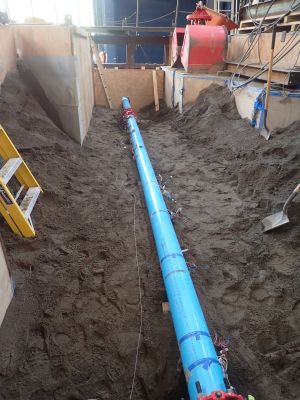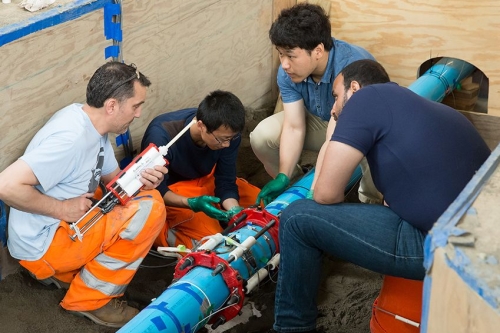The future looks “smart” for underground infrastructure after a first-of-its-kind experiment using several advanced sensors developed by researchers from the group of Kenichi Soga, Chancellor’s Professor in the Department of Civil and Environmental Engineering. Dr. Tzu-Hsuan Lin deployed a newly developed underground wireless sensor network system that detects water leakage, whereas Linqing Luo and Dr. Amr Ewais installed a distributed fiber optic stain sensor system to measure pipeline deformation by fault movement in collaboration with Dr. Xiaomin Xu, Peter Knott and Dr. Cedric Kechavarzi of the Cambridge Centre for Smart Infrastructure and Construction, Cambridge University, UK. The experiment was conducted by the group of Professor Tom O’Rourke at Cornell University.
 |
The sensors – which can collectively measure strain, |
“The vision we have is that our future infrastructure looks after itself by sensing and adapting to the changing environment,” said Soga. “Rapidly developing sensor technologies and data analytics give us the opportunity to make this happen.”
See: Cornell tests 'smart,' resilient underground infrastructure (Cornell University, 6/8/17)

